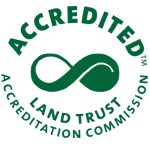Healthy Rivers = Healthy People
Rivers connect people, they are the receiver of our wastewater and stormwater and they reflect all of the things we do on the land. If we have healthy aquatic communities, we likely have healthy people communities too.
What lives in our streams? As part of our stream monitoring program, we collect and identify fish and macroinvertebrates, the bugs that spend part or all of their life cycle in the water and freshwater mussels.
Fish
We have over 70 species of fish in the Lower DuPage River/Lower Des Plaines River watersheds. These fish range in size from small Johny Darters that are 2-3″ up to large flathead catfish and northern pike that can reach over 3 feet in size.
Larger streams tend to support greater diversity. Although smaller streams have fewer fish species, they are important breeding grounds and a supply of smaller fish that feed bigger fish. In general, there are fish that are herbivores that eat plant material and algae, other species that are insectivores and eat insects, and other species that eat other fish and insects. Fish come in lots of different shapes, some long and slender like a stoneroller, others round and compressed like a crappie or wide and flat on the bottom like a catfish. What fish eat and the shape of their body helps to determine what part of a stream system they will inhabit.
Photos from Engbretson Underwater Photography
Macroinvertebrates
Macro means large enough to see without magnification, invertebrate means lacking a backbone – so bugs you can see without a magnifying glass, that do not have a backbone or internal skeletal structure. Many macroinvertebrates do have an exoskeleton or outer support structure like a shell or stiff outer layer that protects the soft insides. Macroinvertebrates include aquatic worms, leeches, and copepods that spend their whole life cycle in the water as well as insects like mayflies, dragon & damselflies, mosquitos, and many beetle species that lay eggs in the water and spend their larval stages in the water for anywhere from a few weeks to more than a year before emerging out of the watery realm.
Macroinvertebrates are a good indicator of water quality because different species have different habitat needs and tolerances to pollution. Some can live just about anywhere like blood worms that don’t need much oxygen or habitat structure. Others have very specific habitat requirements like rocky substrates that have open spaces between the rocks, or fast flowing water tumbling through a riffle with high oxygen levels. Some are very sensitive to high levels of nutrients or ammonia. Because many species of macroinvertebrates can fly as adults, they can recolonize newly restored areas quickly. This adult stage also requires good riparian area habitat and vegetation alongside the stream. Some of the major groups of macroinvertebrates include:
Freshwater Mussels
Based on collections of both live and dead or relic shells, there were once at least 19 species of native mussels found in the Des Plaines River basin. Recent surveys by the Illinois Natural History Survey and others have identified eight species of freshwater mussels living in the Des Plaines River Basin today.
Mussels move through stream beds with a “foot” similar to how a snail moves, so they cannot move very quickly or very far to get to better habitat or cleaner water. They have evolved an ingenious way to overcome their lack of mobility by waving a fleshy lure to attract a fish to come close. The female mussel then expels glochidia or baby mussels that attach to the fish’s gills and hitch a ride to other parts of the stream system.
Photos from Illinois Natural History Survey
Written by Jennifer Hammer, The Conservation Foundation




